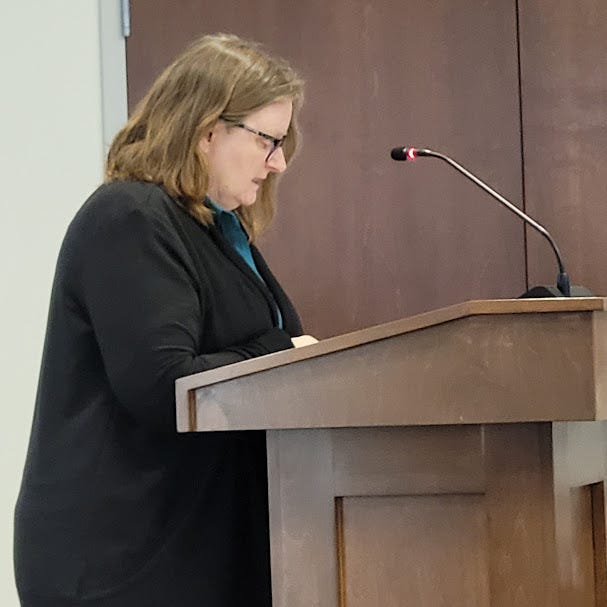Conservation bill cut by $42,000
Councillors agreed to stick with Lower Trent but weren't happy about the process
Trent Hills council just saved taxpayers almost $42,000 but they’re not that happy about it.
There were no smiles or high-fives after they voted at Tuesday's meeting to sign a revised contract with Lower Trent Conservation that will cost the municipality $38,748.14 for risk management services this year, not the $80,081 that the authority said in November that it would charge, a savings of $41,332.
Deputy Mayor Mike Metcalf, the driving force behind the renegotiation of the contract, said he was frustrated with the process that finally reached a deal, but he reluctantly agreed to extend the relationship with Lower Trent.
Rhonda Bateman, Chief Administrative Officer of Lower Trent, appeared at council meetings in November, December, and January to seek approval for its 2025 budget, then coming back to defend its cost for having staff develop risk management plans for properties that could create hazards for the Trent River.
There are currently 18 risk management plans in place for properties in the municipality.
Planning Director Jim Peters told council that the municipality works closely and well with Lower Trent staffers on rezoning issues and building permits.
Metcalf pointed to a Dec. 9 email that Bateman sent councillors, the day before they were to reconsider the risk management issue, in which she said that the existing risk management plans could not be transferred from Lower Trent and she suggested that property owners might not be happy if they had to undergo a new assessment that could result in stricter controls.
She also reminded councillors that they face personal liability if risk management services are not carried out properly and problems arise.
“Something just bothered me about that email,” Metcalf said, noting that he and all councillors are aware of their responsibilities since they receive training on these issues.
So, Metcalf said he read the Clean Water Act 2026 and it clearly says risk management plans can be transferred to qualified providers, he told councillors.
Metcalf is Trent Hills’ representative on the Otonabee authority and the Crowe River Conservation Authority, but not the Lower Trent. Councillors Rick English and Gene Brahaney represent the municipality on that board.
As I reported in January, Otonabee Region Conservation Authority had offered to provide the risk management services for $32,967. That led Trent Hills to notify Lower Trent that it would end its contract at the end of 2025.
Faced with losing a contract, Bateman returned to council’s on Jan. 28 and said Lower Trent would cut its cost to $38,748 for the service. After a lot of discussion, councillors asked staff to examine the options, which included hiring staff and taking over the service, and make a recommendation.
On Tuesday that report by Chief Administrative Officer Lynn Phillips recommended that the municipality stay with Lower Trent at the new lower price. She noted that Lower Trent has provided the service for nine years and its agreement with the municipality was supposed to expire in 2028.
“Staff have an excellent working relationship with Lower Trent staff that has developed over time,” Phillips said.
In the end, council agreed, reluctantly.
But Metcalf suggested the two councillors who represent Trent Hills on Lower Trent’s board should ask some tough questions about how Bateman handled the issue.
He pointed out that Stirling-Rawdon had agreed to pay $7,500 more for the risk management services it receives, but the authority still has a $33,000 gap in its budget.
“I do believe that staff do a good job,” Metcalf said. "I’m disappointed in the way that we got to this point and the amount of time spent on it.”
You can read all Trent Hills News stories on the website here.




Metcalf should be asking the question about the bridge and pedestrian walkway for Nappan Island. In an earlier report it was reported that a development was to go in on that Island but went bankrupt and the Municipality is stuck with one point seven million dollar bridge. The previous bridge was brought into the Municipality when Campbellford and Seymour amalgamated. The council of the day had Jewell Engineering certified the bridge. The only reason there needed to be a bridge is the water backed up from the installed Healey Falls bridge. The new bridge is longer and a pedestrian walkway is installed along side. A planning staff member said at the meeting that it was reported about the bankruptcy that development charges for the subdivision would help pay for the bridge and the walkway. Now this property is in real estate and suggesting it could be used for a hunting camp. Municipality is stuck with a bridge the large snow plow can,t go across, turn around installed. Smaller plow has to go out to finish the job. Instead of this bridge and walkway a causeway could have been installed that large trucks could go across. When the original bridge went in there would have not been the machinery they have today. My question is Mr Metcalf how was the lower Trent involved in this project? Did you have a engineer inspect the old bridge and recommend that it be replaced? This replacement for I presume the developer has cost the taxpayers a lot of money. There would be more pedestrians cross the Trent Island bridge in a couple of summer days than this pedestrian bridge in a year. By the way it is not kept open in the winter. Perhaps the council should purchase the Island, listed for eight million six hundred and ninty five thousand.
Yes Mr Metcalf look into it. Joe Watson